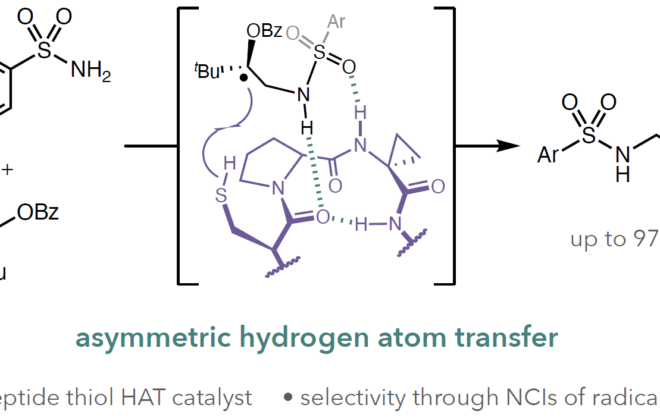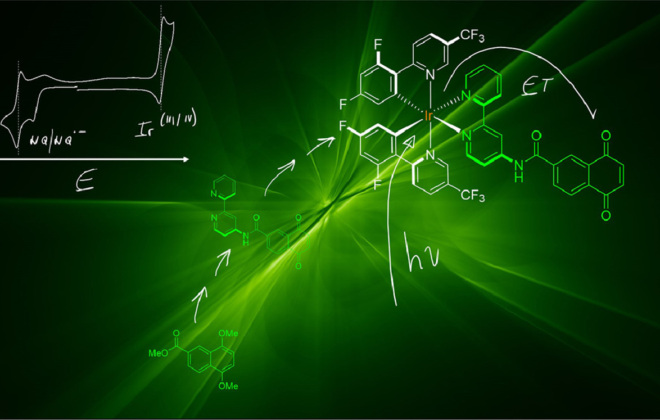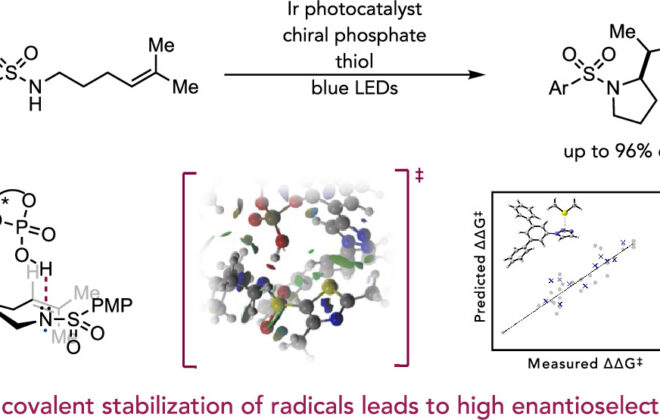45. Ion-pair reorganization regulates reactivity in photoredox catalysts
Justin D. Earley, Anna Zieleniewska, Hunter H. Ripberger, Nick Y. Shin, Megan S. Lazorski, Zachary J. Mast, Hannah J. Sayre, James K. McCusker, Gregory D. Scholes, Robert R. Knowles, Obadiah G. Reid, Garry Rumbles
Nat. Chem. 2022, 14, 746–753 DOI: 10.1038/s41557-022-00911-6
https://www.nature.com/articles/s41557-022-00911-6
ABSTRACT: Cyclometalated and polypyridyl complexes of d6 metals are promising photoredox catalysts, using light to drive reactions with high kinetic or thermodynamic barriers via the generation of reactive radical intermediates. However, while tuning of their redox potentials, absorption energy, excited-state lifetime and quantum yield are well-known criteria for modifying activity, other factors could be important. Here we show that dynamic ion-pair reorganization controls the reactivity of a photoredox catalyst, [Ir[dF(CF3)ppy]2(dtbpy)]X. Time-resolved dielectric-loss experiments show how counter-ion identity influences excited-state charge distribution, evincing large differences in both the ground- and excited-state dipole moment depending on whether X is a small associating anion (PF6−) that forms a contact-ion pair versus a large one that either dissociates or forms a solvent-separated pair (BArF4−). These differences correlate with the reactivity of the photocatalyst toward both reductive and oxidative electron transfer, amounting to a 4-fold change in selectivity toward oxidation versus reduction. These results suggest that ion pairing could be an underappreciated factor that modulates reactivity in ionic photoredox catalysts.





